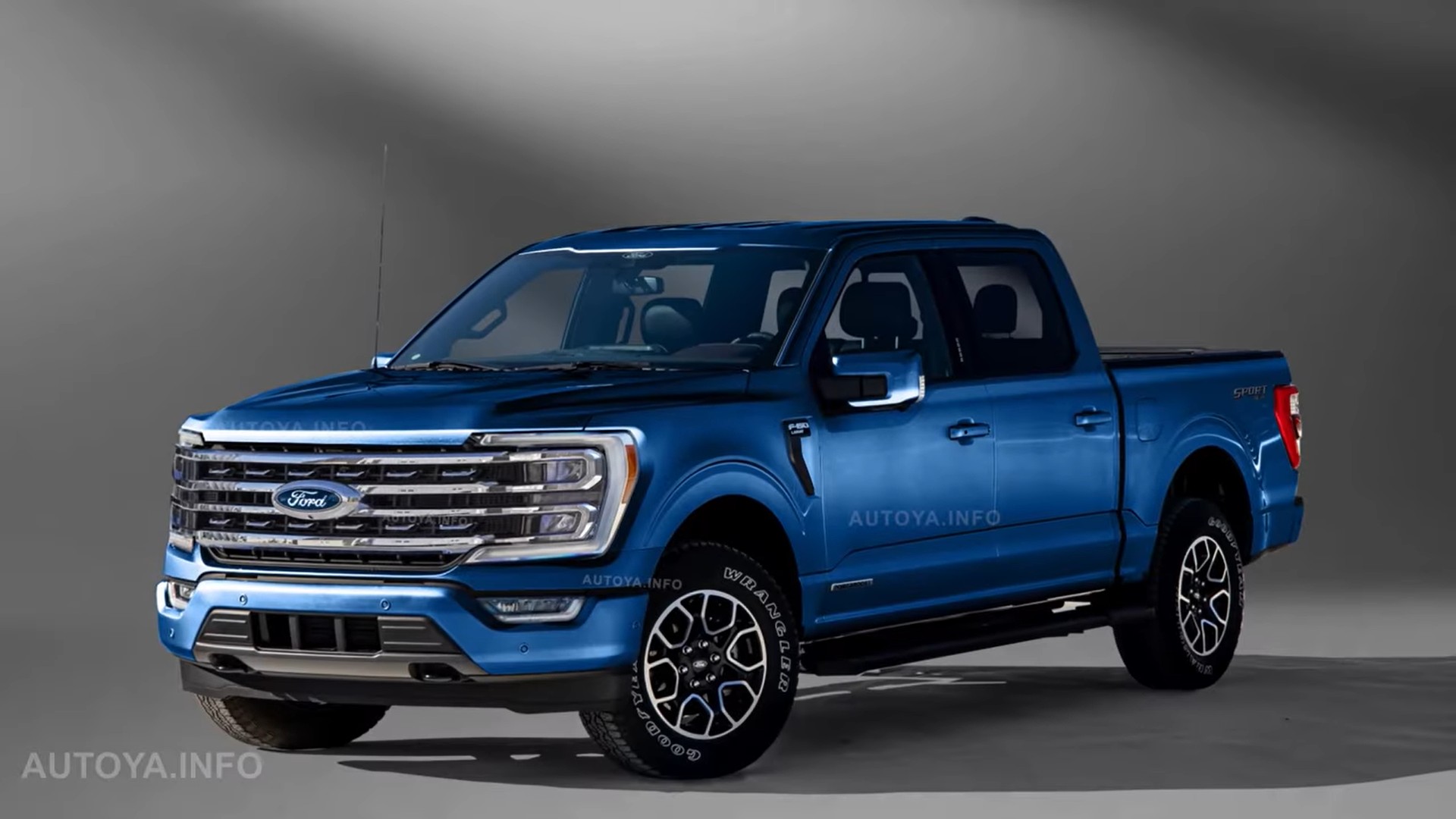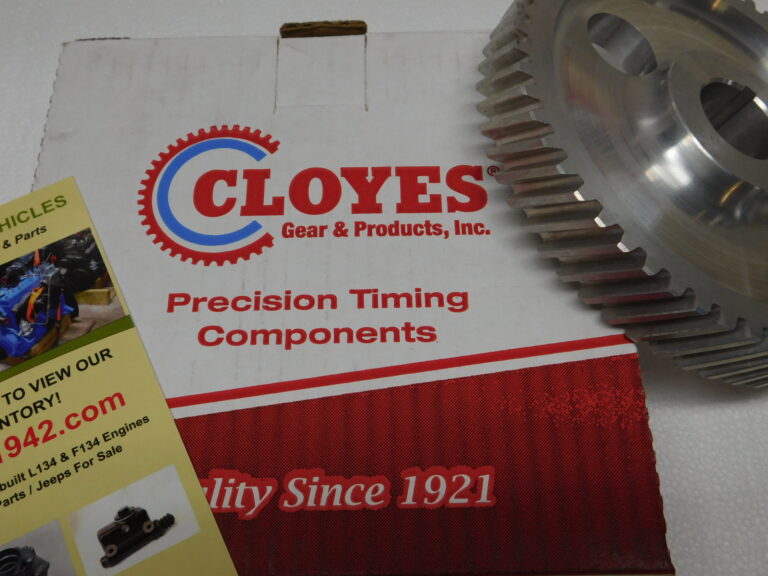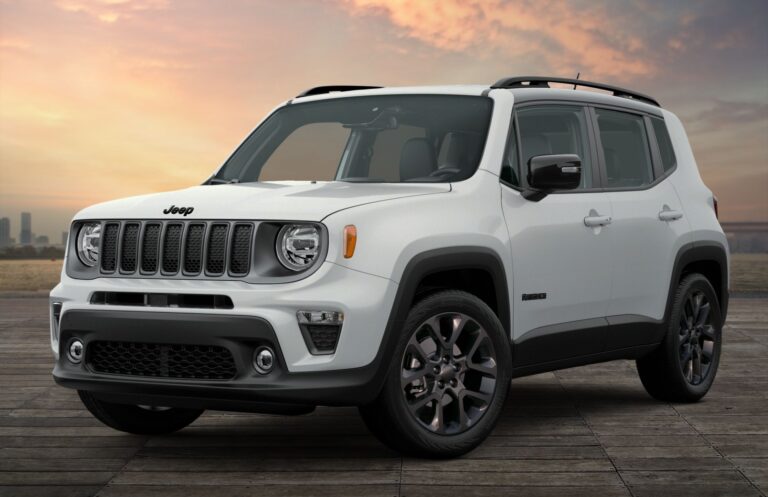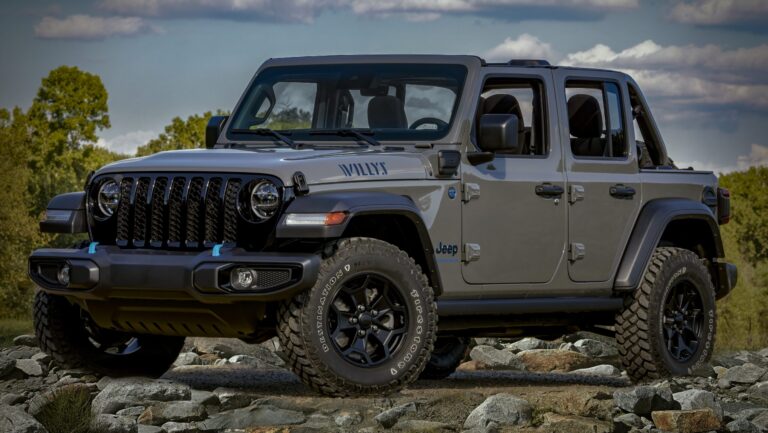Ford 8.8 Jeep TJ For Sale: The Ultimate Axle Upgrade Guide
Ford 8.8 Jeep TJ For Sale: The Ultimate Axle Upgrade Guide jeeps.truckstrend.com
For any Jeep Wrangler TJ owner looking to push the boundaries of their off-road adventures, the phrase "Ford 8.8 Jeep TJ For Sale" often signals the beginning of a significant and highly beneficial upgrade. At its core, the Ford 8.8 refers to the robust rear axle assembly, most commonly sourced from 1995-2001 Ford Explorer or Mercury Mountaineer vehicles, that has become the gold standard for strengthening a Jeep TJ’s drivetrain. This swap is not merely a modification; it’s a transformative upgrade, addressing the inherent weaknesses of the stock Jeep axles and preparing the TJ for larger tires, more challenging trails, and ultimately, greater reliability.
The appeal of the Ford 8.8 is multifaceted: it offers a dramatic increase in strength, introduces the benefits of rear disc brakes, often comes with a limited-slip differential from the factory, and perhaps most importantly, provides all these advantages at a remarkably cost-effective price point. In the world of off-roading, where broken components can mean a stranded vehicle miles from civilization, the peace of mind offered by a significantly stronger axle like the Ford 8.8 is invaluable.
Ford 8.8 Jeep TJ For Sale: The Ultimate Axle Upgrade Guide
Why the Ford 8.8? The Ultimate TJ Axle Upgrade
To understand the immense popularity of the Ford 8.8 swap, one must first grasp the limitations of the Jeep TJ’s factory axles. Most TJs came equipped with a Dana 35 rear axle, a unit notorious in the off-road community for its inherent weakness. With a small 7.5-inch ring gear, spindly 27-spline axle shafts, and a C-clip design that retains the shafts, the Dana 35 is prone to failure, especially when subjected to larger tires (33 inches or more), aggressive driving, or demanding off-road conditions. Even the less common Dana 44 rear axle, while stronger than the Dana 35, often lacks the ideal gear ratios or disc brakes that an 8.8 can provide. The front Dana 30 axle, while generally more robust than the rear Dana 35, also has its limits.
This is where the Ford 8.8 steps in as a hero. Its superior design and construction make it an ideal candidate for an axle swap:
- Inherently Stronger: The 8.8 boasts a larger 8.8-inch ring gear, thicker axle tubes, and commonly features stronger 31-spline axle shafts, dwarfing the Dana 35 in every aspect.
- Cost-Effectiveness: Compared to sourcing and rebuilding a Dana 44, or investing in expensive aftermarket heavy-duty axles, the Ford 8.8 is remarkably affordable. Donor vehicles are abundant in junkyards, keeping acquisition costs low.
- Integrated Disc Brakes: Most donor 8.8 axles come equipped with factory rear disc brakes, a significant upgrade over the TJ’s stock rear drum brakes. This translates to improved stopping power, better heat dissipation, and easier maintenance on the trail.
- Factory LSD Option: Many Explorer 8.8s come with a factory limited-slip differential (Trac-Lok), providing improved traction right out of the box. Even if it’s an open differential, the aftermarket support for lockers and gear sets is extensive and competitive.

For Jeep TJ owners aiming to run 33-inch to 37-inch tires and tackle moderately difficult to hardcore trails, the Ford 8.8 swap is often considered the most logical, practical, and cost-efficient upgrade to ensure drivetrain reliability and capability.
Key Features and Benefits of the Ford 8.8 Axle
Delving deeper into what makes the Ford 8.8 such a powerhouse for the Jeep TJ, several key features stand out:
- Strength: The cornerstone of the 8.8’s appeal. Its 8.8-inch ring gear is substantially larger than the Dana 35’s 7.5-inch, providing more tooth contact area and greater resistance to shearing. The axle tubes are generally thicker and more robust, resisting bending under stress. Crucially, most 8.8s come with 31-spline axle shafts (compared to the Dana 35’s 27-spline), which are not only larger in diameter but often made from stronger material, significantly reducing the risk of shaft breakage.
- Integrated Disc Brakes: This is a major functional upgrade. Rear disc brakes offer superior braking performance, especially during repeated braking or steep descents, by dissipating heat more effectively than drum brakes. They also provide more consistent braking in wet or muddy conditions and are far easier to service and clean after a muddy trail ride.
- Limited Slip Differential (LSD) or Easy Locker Upgrades: A significant percentage of 1995-2001 Ford Explorers were equipped with a factory Trac-Lok limited-slip differential in the 8.8 axle. While not a true locker, it provides a noticeable traction improvement over an open differential. More importantly, the aftermarket is flooded with affordable and robust locker options for the 8.8, from automatic lockers (like Detroit Lockers or Yukon Grizzly) to selectable air lockers (like ARB), giving owners complete control over their traction needs.
- Ideal Width and Bolt Pattern: The 1995-2001 Explorer 8.8 has a wheel mounting surface (WMS) to WMS width of approximately 59.625 inches. This is only about 1.5 inches wider than a stock TJ Dana 35 (approximately 58.5 inches). This minor increase in width is often considered beneficial for stability and rarely causes tire clearance issues, especially with proper wheel backspacing. Furthermore, the 8.8 shares the same 5×4.5-inch bolt pattern as the Jeep TJ, meaning your existing wheels will bolt right up without the need for adapters.
- Abundant Availability: Ford Explorers from the 1995-2001 era were mass-produced, making their 8.8 axles readily available in salvage yards across the country. This high availability keeps prices competitive and ensures a steady supply of donor parts.
What to Look For: Buying a Ford 8.8 for Your TJ
When searching for a Ford 8.8 for your Jeep TJ, careful selection can save you headaches and money down the road.
Donor Vehicle:
- Years: Focus exclusively on 1995-2001 Ford Explorer or Mercury Mountaineer models. These years consistently offer the desired width and disc brakes. Earlier models (pre-95) often have drum brakes, and later models (post-2001) feature an independent rear suspension or different axle designs that are not suitable.
- Engine/Trim: The engine size (V6 vs. V8) generally doesn’t affect the 8.8 axle itself, but some V8 models might have slightly different gear ratios.
Condition Check:
- Rust: Inspect the axle tubes and differential housing thoroughly for excessive rust. Surface rust is common and fine, but deep, pitting rust can compromise integrity.
- Straightness: Look down the axle tubes from the ends. They should appear perfectly straight. Any visible bend could indicate a previous impact or stress, rendering the axle unusable.
- Fluid Check: If possible, remove the differential cover (or at least the fill plug) and inspect the differential fluid. It should be relatively clean, not milky (indicating water contamination), and free of large metal shavings, which are signs of worn bearings or gears.
- Gear Ratio: Determine the gear ratio. This is crucial for matching your front axle. Look for a metal tag on one of the differential cover bolts or check the door jamb sticker on the donor vehicle (often coded). Common ratios include 3.55, 3.73, and 4.10.
- LSD vs. Open Diff: Spin one wheel by hand. If the opposite wheel spins in the same direction, it likely has a limited-slip differential. If it spins in the opposite direction, it’s an open differential.
Essential Modifications and Parts Needed:
The Ford 8.8 is not a bolt-in swap. It requires welding and fabrication to integrate it into the TJ’s suspension system. You will need:
- New Spring Perches: The Explorer’s leaf spring perches won’t work with the TJ’s coil springs. New coil spring perches must be welded onto the 8.8 axle tubes.
- Shock Mounts: New shock mounts compatible with TJ shock lengths and angles.
- Track Bar Mount: A crucial component for controlling lateral axle movement. Proper placement and welding are essential for handling and stability.
- Control Arm Mounts (Optional but Recommended): While you can reuse upper control arm mounts from the TJ, many swap kits include new ones for better geometry.
- Brake Line Adapters/Relocation: The Ford brake lines will need to be adapted to connect to the Jeep’s brake system.
- E-Brake Cables: Adapting the Explorer’s parking brake cables to the TJ’s system can be tricky. Aftermarket solutions or custom fabrication are often required.
- U-Bolt Plates: To secure the axle to the spring perches.
- Pinion Angle Adjustment: Setting the correct pinion angle is paramount to prevent driveshaft vibrations and premature U-joint wear, especially on lifted TJs. This often involves welding the spring perches at a specific angle relative to the pinion.
- Aftermarket Bracket Kits: Several reputable companies (e.g., Artec Industries, Ruffstuff Specialties, M.O.R.E.) sell comprehensive weld-on bracket kits specifically designed for the TJ 8.8 swap. These kits simplify the process by providing pre-cut and accurately formed mounts, significantly reducing fabrication time and ensuring proper geometry.
Installation: A DIY Project or Professional Job?
The Ford 8.8 swap is a project that falls squarely in the intermediate to advanced DIY category.
DIY Considerations:
- Welding Skills: This is the most critical requirement. Proper, strong, and safe welding of the suspension brackets is non-negotiable. If you don’t possess adequate welding skills or equipment, this part of the job must be outsourced.
- Tools: Beyond basic hand tools, you’ll need a grinder to remove old brackets, a reliable welder (MIG is common), an angle finder for pinion angle, heavy-duty jack stands, a floor jack, and potentially a plasma cutter or oxy-acetylene torch for efficient bracket removal.
- Time Commitment: For an experienced DIYer with the right tools and a prepared axle, the swap can be completed in a dedicated weekend. For someone learning as they go, it could stretch into several weekends.
Key Installation Steps (Simplified):
- Preparation: Remove the old TJ rear axle. Clean the Ford 8.8, removing all old Explorer brackets.
- Mock-up: Position the 8.8 under the TJ. Carefully measure and mock up the new spring perches, shock mounts, and track bar mount. This step is crucial for correct suspension geometry and pinion angle.
- Welding: Once everything is perfectly aligned and measured, weld the new brackets securely to the axle tubes. Take your time, ensure full penetration welds, and follow proper safety procedures.
- Finishing: Paint or coat the axle to prevent rust.
- Reassembly: Install the axle, connect the driveshaft, brake lines, and e-brake cables. Bleed the brakes thoroughly.
- Test Drive: Take a cautious test drive, listening for unusual noises and checking for vibrations.
Professional Installation:
If you’re uncomfortable with welding, lack the necessary tools, or simply prefer peace of mind, professional installation is an excellent option. A reputable off-road shop or fabricator will have the expertise to ensure the swap is done safely and correctly, including setting the proper pinion angle and brake line routing. While more expensive, it guarantees a high-quality outcome.
Performance Considerations and Upgrades
Once the Ford 8.8 is installed, several considerations and further upgrades can maximize its performance:
- Gear Ratios: The most important consideration. Your new 8.8’s gear ratio must precisely match your front axle’s ratio. If they don’t, your 4WD system will bind and sustain damage. This often means re-gearing the 8.8 to match your front, or re-gearing both axles to a ratio better suited for your tire size (e.g., 4.56, 4.88, or 5.13 for 35-inch+ tires).
- Locker Options: While a factory LSD is a good start, a true differential locker (automatic or selectable) will dramatically improve off-road traction. Popular choices include Detroit Lockers (automatic, robust), ARB Air Lockers (selectable, requires air compressor), or Yukon Grizzly/Spartan Lockers.
- Axle Shafts: Although the 31-spline shafts are a significant upgrade, chromoly axle shafts (from brands like Yukon or Ten Factory) are available for those pushing the limits with extremely large tires or aggressive driving.
- Differential Covers: A heavy-duty differential cover (e.g., from Artec, Poison Spyder) provides additional protection against impacts on rocks and trails.
- Brake Upgrades: For even better stopping power, aftermarket kits are available to upgrade the 8.8’s disc brakes with larger rotors or more powerful calipers.
- Driveshaft: Depending on your lift height and the final pinion angle, a CV (constant velocity) driveshaft might be beneficial or necessary to prevent driveline vibrations.
Potential Challenges and Solutions
While the Ford 8.8 swap is highly beneficial, it’s not without its potential challenges:
- Width Difference: The 1.5-inch wider track of the 8.8 compared to the stock Dana 35 is generally minor and often beneficial for stability. If it bothers you aesthetically, specific wheel backspacing can help tuck the tires in slightly.
- E-Brake Cable Routing: Adapting the Explorer e-brake cables to the TJ’s system can be finicky. Aftermarket kits are available that simplify this, or a creative DIY solution might be needed.
- Pinion Angle Setting: Incorrect pinion angle leads to driveshaft vibrations, especially at highway speeds, and can cause premature U-joint failure. This requires careful measurement with an angle finder and potentially adjustable control arms.
- Welding Quality: As mentioned, poor welds are a serious safety hazard. If in doubt, consult or hire a professional welder.
- Sourcing the Right Axle: Ensure you’re getting a 1995-2001 Explorer 8.8 with disc brakes. Verify the gear ratio before purchase if possible.
Practical Advice and Actionable Insights
- Research Extensively: Before starting, delve into forums, YouTube videos, and build threads dedicated to the TJ 8.8 swap. Knowledge is power.
- Inspect Thoroughly: When sourcing your axle, be meticulous in your inspection. A few extra minutes at the junkyard can save hours or hundreds of dollars later.
- Plan Your Build: Decide on your target tire size, gear ratio, and whether you want a locker before you start the swap. This influences parts needed.
- Safety First: Always use proper jack stands, never work under a vehicle supported only by a jack, and wear appropriate personal protective equipment (PPE), especially when grinding or welding.
- Measure Twice, Weld Once: This adage is critically important for bracket placement and pinion angle. Small errors here can lead to significant problems.
- Don’t Rush: Take your time. A rushed job is often a poorly executed one. Patience ensures a quality, safe, and reliable installation.
Concluding Summary
The Ford 8.8 axle swap stands as one of the most popular and impactful modifications a Jeep TJ owner can undertake. It directly addresses the Achilles’ heel of many stock TJs – the weak rear axle – by replacing it with a significantly stronger, disc-braked, and often limited-slip-equipped unit. While it requires a degree of mechanical aptitude and, crucially, welding skills, the investment in time and effort pays dividends in terms of enhanced durability, reliable performance on challenging trails, and improved stopping power on and off-road. For any TJ owner serious about pushing their rig further, the Ford 8.8 is not just an upgrade; it’s an essential foundation for true off-road capability. The search for a "Ford 8.8 Jeep TJ For Sale" is the first step towards unlocking your Jeep’s full potential.
Ford 8.8 Jeep TJ For Sale: Estimated Price Guide
Please note that these prices are estimates and can vary significantly based on location, condition of parts, market demand, and the specific shop’s labor rates. This table aims to provide a general idea of costs associated with a Ford 8.8 swap.
| Item/Service | Description | Estimated Price Range (USD) | Notes |
|---|---|---|---|
| Used Ford 8.8 Axle (Bare) | From junkyard, stripped of brakes/LSD, needs full rebuild. | $150 – $400 | Least expensive acquisition, but requires more work/parts. |
| Used Ford 8.8 Axle (Complete) | From junkyard, with disc brakes, shafts, often with factory LSD. | $300 – $600 | Most common and recommended starting point. Verify condition before purchase. |
| TJ 8.8 Swap Brackets Kit | Weld-on perches, shock mounts, track bar mount, etc. (e.g., Artec, Ruffstuff) | $200 – $450 | Essential for correct suspension geometry. |
| Re-gearing Kit (Gears & Install Kit) | For new gear ratio (e.g., 4.56, 4.88, 5.13) to match front axle. | $250 – $400 (per axle) | If re-gearing both front & rear, multiply by 2. Does not include labor |





